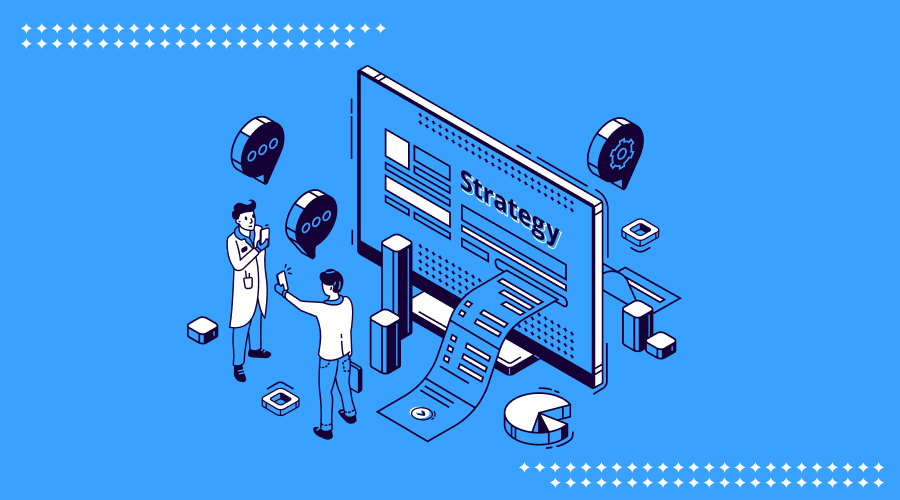Creating a B2B app is not like creating any ordinary consumer app. If you aim at businesses, especially the big ones, it gets serious. The buyers are more informed, and there is tough rivalry. But fear not! By adopting the correct method for your Minimum Viable Product (MVP), you can break into the B2B market and create something extremely transformative.
In this post, Knovial will explore the special difficulties of building a B2B app MVP and investigate some tried-and-true plans to assist you in your journey. Stay tuned, because it’s going to be an interesting one!
The B2B App Landscape: Not Your Average App Store
First and foremost, clear your mind of everything you have learned about building apps for consumers. The B2B universe functions with its unique set of rules. This is what you will encounter:
Longer sales cycles
In contrast to consumer apps, where a person can download your product and begin using it within minutes, B2B sales may require several months or even years. Your MVP should be prepared for this long process; it is like running a marathon instead of a sprint.
Multiple decision-makers
You are not only convincing one person to hit “download.” You need to win entire committees, from IT managers all the way up to C-suite executives.
Integrating headaches
Your app is not alone in this world. It must work well with other enterprise systems, and that can create serious technical issues.
Safety and compliance
If you handle significant business data, there is no room for compromise on security. Meeting requirements such as GDPR, HIPAA, or SOC 2 is not optional; it’s a necessity.
Customization requests
Every business believes it’s unique. However, you should also be flexible to tailor your app to specific needs.
So, after setting the battlefield, now we will discuss the tactics. How do you construct an MVP that directly confronts these issues?
Strategies to Build an Ideal MVP
Strategy 1: Focus on the Core Problem, Not Features
The urge to resolve all difficulties at once is real. Do not succumb to this desire! Your MVP should focus on a single, crucial problem and deliver the best solution for it.
Let’s look at Slack as an illustration. They did not aim to create an extensive enterprise communication package. Their focus was on one aspect: making team communication less troublesome and more convenient. They managed to find a way into organizations and grow from there by solving this main problem.
- Conduct in-depth interviews with potential customers to identify their biggest pain points.
- Prioritize the problems based on urgency and potential impact.
- Choose one problem that aligns with your team’s expertise and market opportunity.
- Ruthlessly cut any feature that doesn’t directly address this core problem.
Strategy 2: Build for Decision-Makers and End-Users
In B2B, the person who makes the decision to buy your app might not be the one using it every day. So, your MVP has to attract interest from both parties.
For the people who make decisions, emphasize ROI, security, and integration. They are interested in understanding how much money your application will save them, safeguarding their data, and fitting with their present technological collection.
For end-users, focus on usability and efficiency. If your app can make their lives easier or help them perform their tasks more effectively, these people may turn into strong supporters of your application within this organization.
- Create separate user personas for decision-makers and end-users.
- Design clear, ROI-focused messaging for the decision-makers.
- Develop an intuitive, user-friendly interface for end-users.
Strategy 3: Embrace Modularity and APIs
Recall those headaches of integration we discussed before? This is how you deal with them: Create your MVP in a modular way, right from the start.
With a design that supports an architecture driven by APIs and is flexible, it becomes simpler to combine with different enterprise systems. Also, as your business expands, this method makes the process of adding new functionalities and customizations less complicated.
- Design your app architecture with a clear separation of concerns.
- Develop a robust API that allows for easy data exchange and integration.
- Document your API thoroughly to make life easier for enterprise developers.
- Think about designing connectors specifically for well-known enterprise systems (like Salesforce and SAP); this could be a competitive advantage for you.
Strategy 4: Prioritize Security and Compliance
In B2B, security is not just a luxury; it can be the end of a deal. Your MVP must show that you are committed to security from the very beginning.
However, this doesn’t imply that you must possess every security certification possible for your MVP. You just need to show a definite plan towards acquiring the necessary compliance and be able to express your security methods with conviction.
- Implement basic security best practices (e.g., encryption, secure authentication) from the start.
- Create a security and compliance roadmap that aligns with your target market’s needs.
- Be transparent about your current security measures and future plans.
- Consider partnering with established security firms to add credibility to your offering.
Strategy 5: Build a Flexible Onboarding and Support System
In the B2B world, you can’t just let your app lose and hope everything goes well. Enterprises need special treatment for onboarding and support.
Your MVP should have a flexible process for welcoming new users that can fit various sizes and structures of organizations. Also, do not forget to ensure good support; having a team ready to help who knows their stuff well can be an important factor during these early stages.
- Develop a modular onboarding process that can be scaled up or down.
- Create comprehensive documentation and training materials.
- Set up multiple support channels (e.g., email, chat, phone) to cater to different preferences.
Strategy 6: Leverage Social Proof and Case Studies
B2B buyers are not risk-takers. They want to see evidence that your solution has been successful for others before they commit. In the MVP phase, you should start generating social proof.
If you cannot obtain complete case studies at the start, try to showcase credibility through other means. This could come from partnerships, advisor relationships, or even elaborate explanations of your development process.
- Identify beta customers who are willing to provide testimonials or serve as references.
- Document the results of any pilot programs or early adopters.
- Leverage your network to get endorsements from industry experts or thought leaders.
- Be transparent about your product roadmap to show a long-term vision.
Strategy 7: Plan for Scalability from Day One
Even though your MVP is not required to immediately handle enterprise-scale operations, it must be designed in a way that allows for scalability. The worst outcome for your B2B app is if it collapses when a big customer attempts to introduce it throughout their whole company.
This is about being thoughtful regarding the choices you make in technology, database design, and general structure. It may require more time initially, but it can prevent significant difficulties later on.







